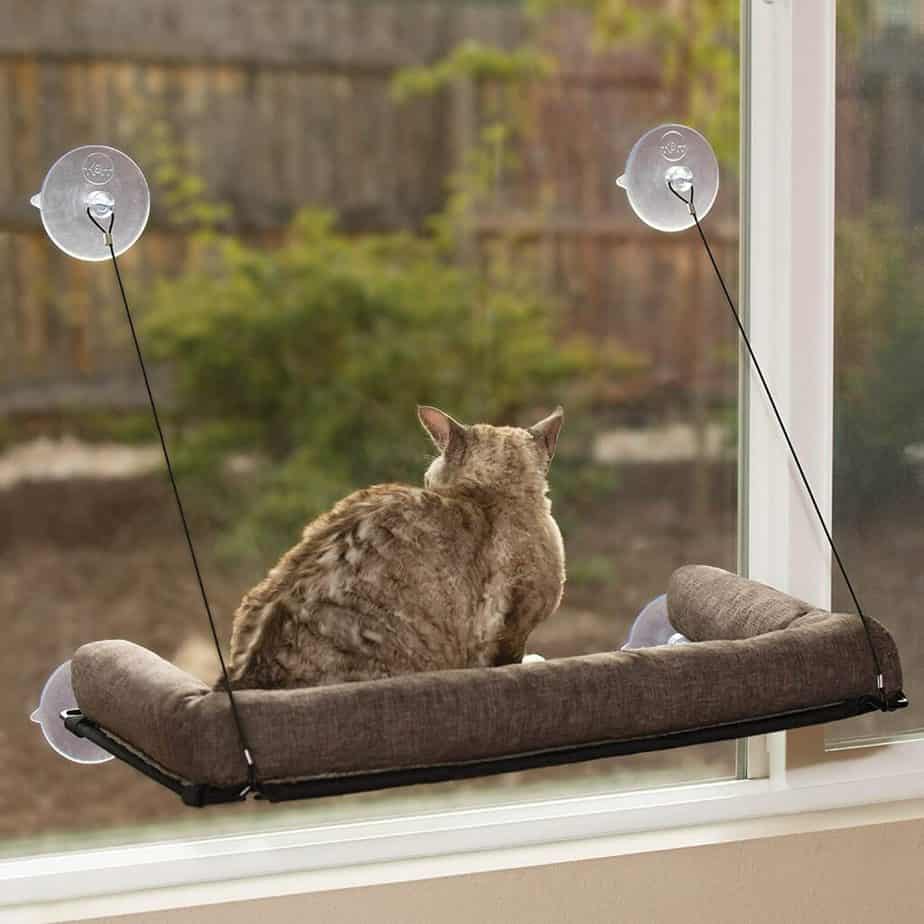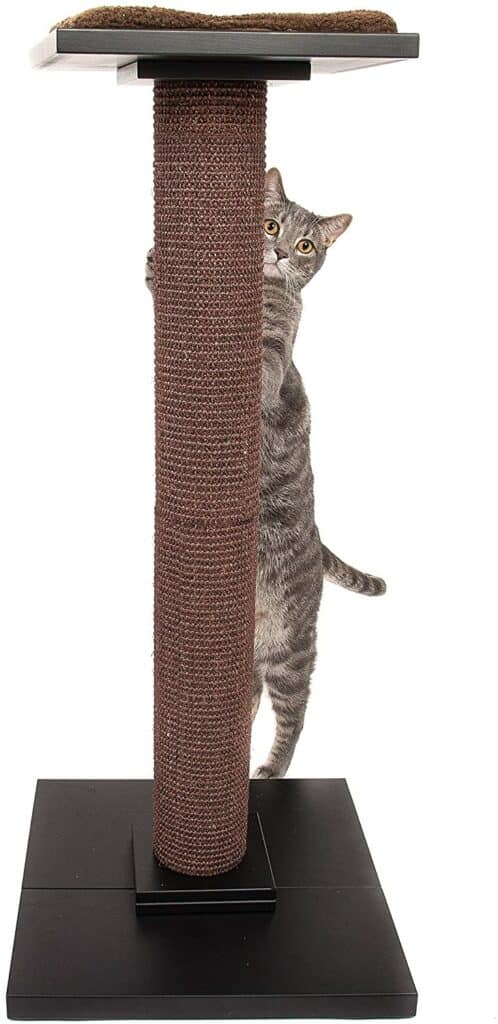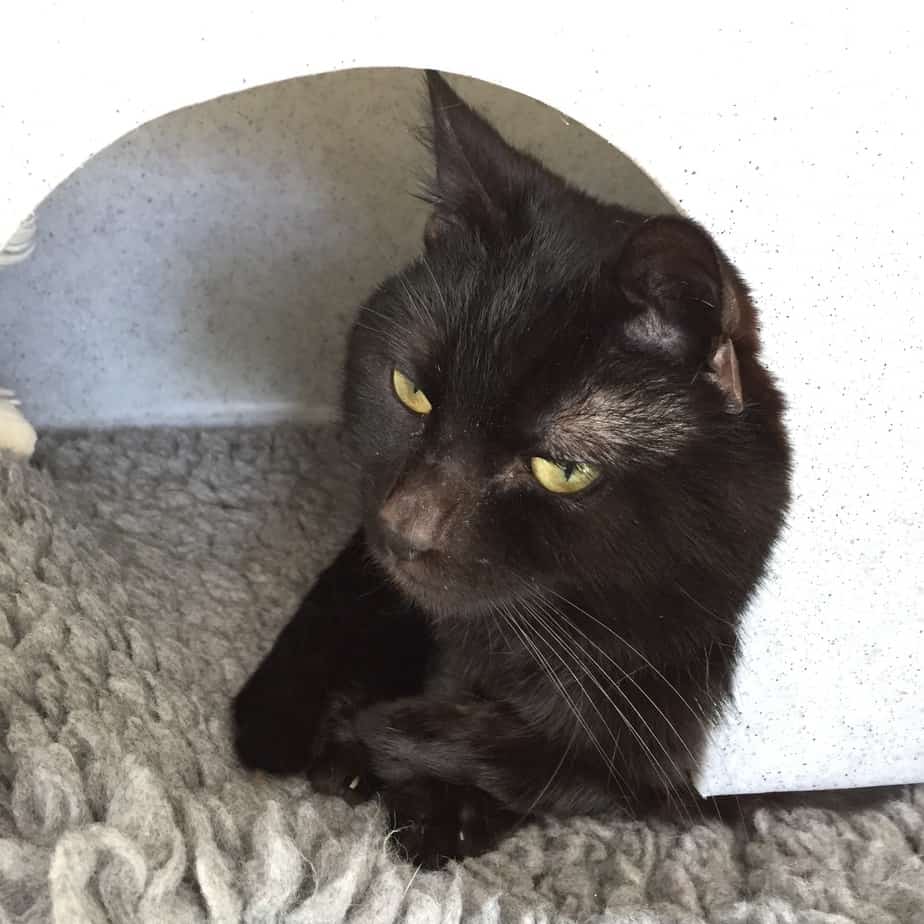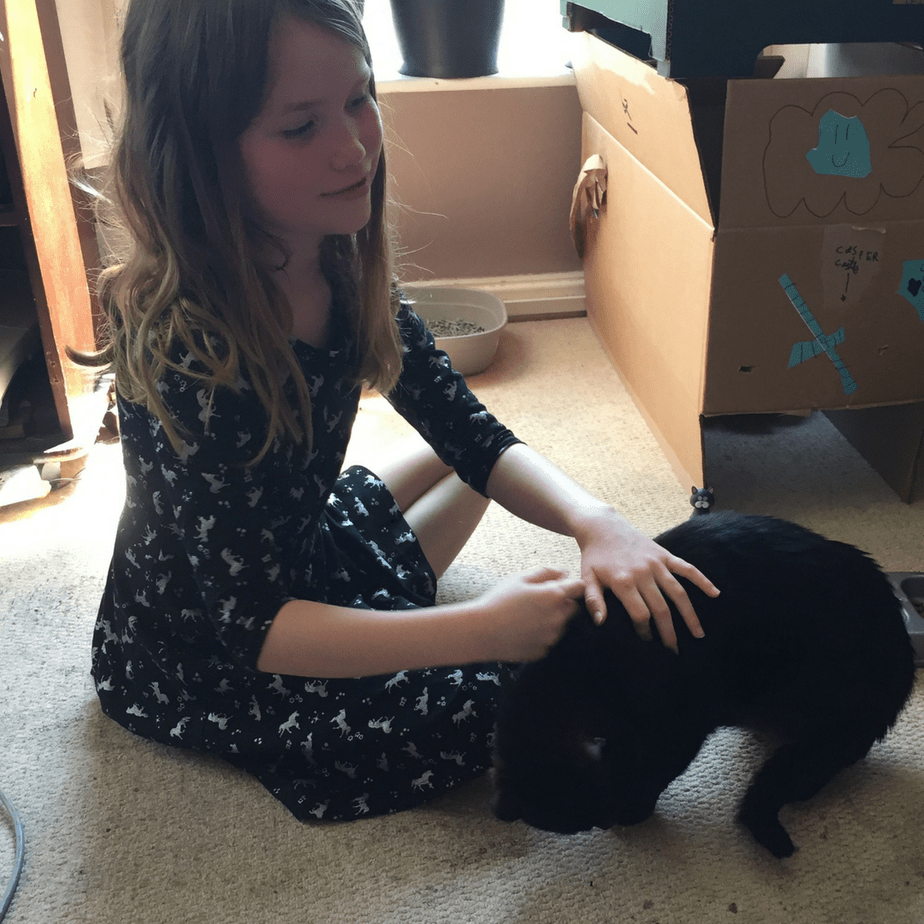
Cats are sociable animals, and the more the merrier, right? Well, no. Most domestic cats are actually descended from a species of solitary hunters and they’re extremely territorial. Cat lovers often want to have more than one pet, which means trying to bring another cat into your home, and that can lead to problems.
We recently added another fur-baby to our family. We adopted 3-year-old Caspar from a local shelter and brought him home to live with me, my two children, two rats, a rabbit and of course our original fur baby, Tilly. Tilly is a nine-year-old calico who has a tendency to be a bit grumpy, so before bringing Caspar home I did plenty of research into how best to introduce them. Here’s what I learned.

Table of Contents
Do Cats Need Company?
You might have heard that cats prefer to be alone. That’s true, to a certain extent, but it’s not the whole picture. Our domestic cats come from a breed of solitary hunters. They hunted alone, and they marked and defended their territory.
We can see echoes of their ancestry in the way cats mark their territory by spraying and the yowling and hissing that comes when another cat tries to come into their space. It’s also why cats prefer to eat alone. If you have multiple cats and you feed them together, they may seem to be getting on just fine, but your cats will be stressed by having to compete for food.
Cats also like to have company– what kind of company really comes down to the cat. Some cats will accept anyone or anything that isn’t another cat; they just won’t tolerate sharing space with another feline. For others, they will happily snuggle down with another cat, or cats, and form a colony. As their owner, you will know your cat best, and you can make a decision as to whether you think they’d be happy with other animals in the home.
This is Tilly. She’s our 9-year-old Calico. She’s pretty independent and really only comes to see us when she wants food. She scratches at the door to be let out and then knocks when she wants to come back in.

Our neighbors have cats too, and when we have our doors open they sometimes come into the house for a look around. Tilly doesn’t mind that too much and will sit and watch unless they try and eat her food.
Tilly came to us when her previous owner needed to rehome her. She’s lived in a house with both cats and dogs before. We decided that Tilly probably wouldn’t mind us getting a new cat too badly, and we thought it might even bring out a gentler side of her personality.
Can You Stop a Solo Cat from Getting Bored?
If you don’t think that your cat would tolerate having another come into your home, or you don’t have the resources for more than one cat, then there are other things you can do to make sure that your cat’s needs are met.
Probably the easiest way for a cat to stay occupied is to let them outside. This will give them the opportunity to watch the world go by, or to pounce on insects and explore. Here in the UK, it’s very common for cats to spend most of the day outside and to only come indoors during the evening.
However, if you have a house cat, then you will need more tools in your cat-parent toolbox to keep them occupied. You should think about things like:
Room with a View
Cats like to be able to see out the window. This can be done simply by clearing off a window sill, or putting a cat bed up there so they can get cozy while they watch. For cats, the higher the better. These window perches make a great vantage point to look at the outdoors.

Furry Buddy Cat Window Perch
Give your cat something to watch by adding a bird or squirrel feeder near the window and your cat will stay tuned for hours.
Itchy and Scratchy
There’s nothing a cat likes more than to have a good scratch, but this can be damaging to your furniture if they use that rather than a proper scratching post. If you have space, a sturdy wooden scratching post is the perfect solution; smaller pieces and cardboard scratch pads are available too.

Ultimate Cat Scratching Post
Lots of Toys
Your cat will need toys to play with. You should try and make time to play with your cat every day. Simple lure type toys will help your cat get their need to hunt out of their system and lower aggression. Catnip toys are always popular, and there are now an increasing number of automated toys that entertain your cat if you have to leave them alone for a while. Have a good selection of toys to meet your cat’s mood, and rotate them often so your fur baby doesn’t get bored. Here are some of our favorites:

PetMate Jackson Galaxy Airplay Wand

SmartyCat Catnip Mice

YoFun Interactive Toy and Treat Dispenser

Kookamung Krazy Kitty Catnip Bubbles
You can also check out our review of the best cat apps for your smartphone or tablet!
By making sure that your cat’s need for entertainment is met, you may find that the behaviors you thought were caused by loneliness are improved and you don’t need to bring another kitty home at all!
Understanding Territorial Behavior
Cats mark their territory through scent. They usually do this by rubbing their bodies, especially their faces, up against things to make it smell like themselves. This is part of what your cat is doing when they brush around your legs when you get home, and when they rub their cheeks against you and the furniture.
The smell is much more important to cats than it is to humans, they have 20 million smell receptors, which is four times more than we do! When they catch the smell of another cat, they pick up a lot of information about it: what sex it is, whether it’s ready to mate, and age. When they mark their own territory they are leaving that information for others.
By rubbing themselves around the room, and you, your cat is creating a common scent. It’s comforting and familiar when a cat smells that aroma it knows that it is safe. Anything that smells different is a cause for curiosity, or concern, depending on the temperament of your cat. That’s why scent plays such an important part in introducing a new cat into your home.
Introducing a New Cat

This is Caspar. He’s a 3-year-old short-haired cat who we met at the local shelter (where this photo was taken– doesn’t he look lonely?) We checked with the shelter which cats would be best suited to join a home that already had a cat.
I met Caspar by myself first and fell in love at first stroke. I then took my children to meet him, to see how he would behave around them. Once I was sure that he would get along with all the humans, we started thinking about how to make sure he got along with Tilly, too.
Resources
One cause of conflict between cats is if there aren’t enough resources. You don’t want them to be competing for food bowls, water or litter trays. You also don’t want to give one cat the chance to block the other from getting to any of these things. It’s suggested that you have a litter box for each cat and one spare, so for our newly two-cat household, we would need three boxes. We also bought some extra food and water bowls, so we could have more feeding stations around the house.
Solitary Confinement
It’s quite stressful for a cat to come into a new home, so it’s important to control their environment at first. If you can, pick a room that will be your new cat’s base for the first week or so. Install them in there with a litter box, food, water, and somewhere to hide. My children took on this challenge, building, ‘Caspar’s Castle’ for him to retreat in to. It meant that when he hid away they didn’t feel bad, or want to hunt him out; they were just proud that he was enjoying the castle they’d built.

We then introduced him to the family, one member at a time. We watched his cues to see if he was getting overwhelmed and if he wanted to go into his box we let him. It didn’t take long before he started coming out in search of snuggles.
Transferring Scents
As soon as Caspar came into the house he knew there was another cat there. He read Tilly’s scented calling card and started looking for her. She knew that he was in the house too, so she stopped going outside to use the bathroom and retreated to the spare bedroom.
To help them get used to each other, we transferred their scents. The shelter had given Caspar a blanket to sleep with once we said we’d adopt him, and I took that and rubbed it at cat height in a few spots around the house. Now Caspar’s scent was part of the house, and Tilly could start to get used to it.
Each night I gave them both a clean cloth to sleep on, and in the morning I left it somewhere the other could find it. In the beginning, they were very curious about these smells. After a few days, they stopped reacting, which is when I knew we were ready to move on to the next step.
A word of warning: don’t rub the scent of one cat onto another. It will make them feel very stressed and uncomfortable to smell like another animal and they won’t be able to get away from the odor. That’s not the association you want with your new cat!
Love? At First Sight
The next step was to let Tilly and Caspar see each other, but not be able to get to each other. You can do this by using a screen door or mesh barrier, but as Caspar had taken up residence in our bay window, he first saw Tilly through that.
The advice that we were given was to keep introducing your pets this way until they don’t react strongly to the sight of another cat. For Tilly and Caspar, this only had to happen once. Caspar just gave an inquisitive meow, and Tilly looked at him for a while before walking away.
Brief Encounter
Now that the cats weren’t reacting to the sight or scent of each other, I opened the living room door and let Caspar explore the whole house. It wasn’t until much later that day that Tilly came down and discovered him there.
I had been told it might be useful to have a blanket handy; cats who are about to fight will lock eyes and breaking their gaze can help one of them to run away. I didn’t need it, though. There were more questioning meows from Caspar, and Tilly got up onto a box and stared down at him. When he approached, she hissed but didn’t try to attack him. He sensibly backed off. I told them both they were wonderful and gave them treats!
After a few days, they were sleeping in the same room. They’re not best friends yet, but they aren’t fighting and I’m hopeful that by taking good care of them both they will soon be proper friends.
Building Positive Associations
When your cats are comfortable being in a room together, then you can start joint play. Use something like an air toy, which you can use to dangle above first one cat and then the other. They will soon be having so much fun, they won’t realize they’re playing together.
What to Look For When Cats Meet
When it comes to relationships between cats, they can go three ways. Your cats can either become friends, foes, or they decide they’re content to share a space. Here’s what each of those behaviors looks like:
Foes
This is the most obvious behavior. If your cats are enemies, they will be hissing and spitting at each other at best, and fighting at worst. Look out for your cats getting agitated, starting with putting their ears back and growling. If their pupils dilate, and they start hunkering down then the cat is feeling very threatened and is likely to attack.
Foe behavior can also be more subtle. It could be that one cat is blocking the other from getting to the food, water or litter tray– that’s why it’s important to have more than one of each. This sort of behavior can be tricky to spot, so keep an eye on your cats when they are eating to make sure everyone is getting enough.
Neutral
Sometimes cats will decide that while they don’t really like each other, they’re happy enough to share space. Here you won’t see growling or fighting, but you won’t see your pets curled up together either. You might find that one cat lives upstairs, the other downstairs. Or one goes outside, and the other stays in. If it works for you and them, this isn’t a problem, but keep an eye out for signs of stress from one or other of you cats such as over-grooming or weight loss.
Friends
This is where I hope that Caspar and Tilly will get, eventually. I’d love to see them curled up together when they are sleeping, or taking turns to groom each other. If your cats are content to feed together, share litter boxes, and take care of each other then you’ve done a great job at introducing them to each other.
Having more than one cat is a wonderful way to make sure that everyone in the family gets a warm lap on a cold winter night! The shelter told me that the number one reason for failed adoptions is the cat’s not getting along. It does take some effort to help your cats along but I am sure it will be worth it.
Further readings:
When Can You Bring Home a Kitten?

